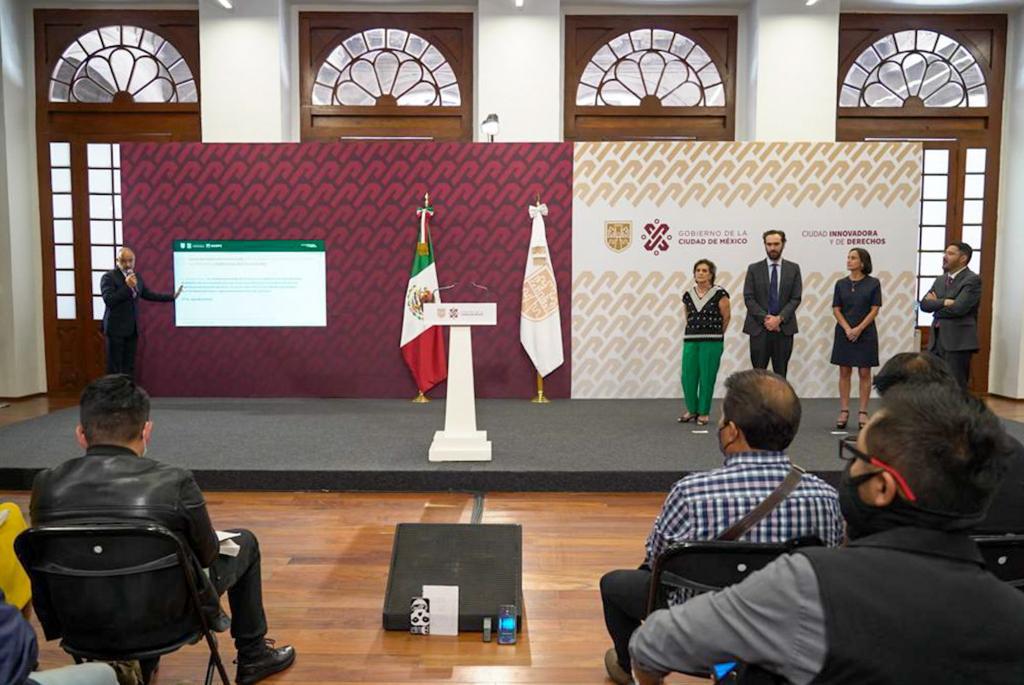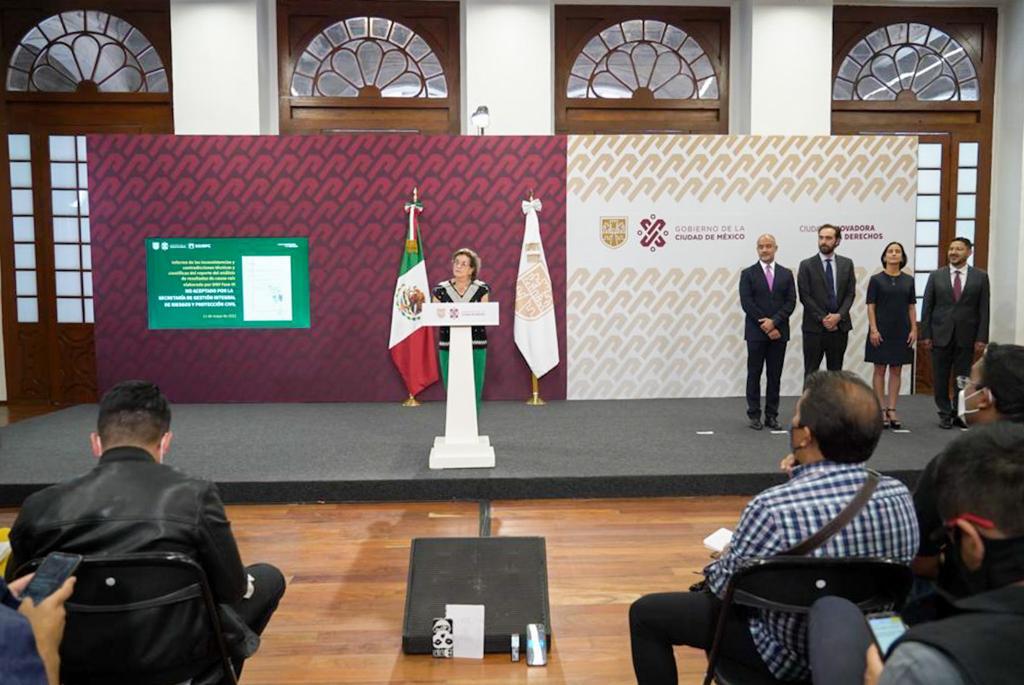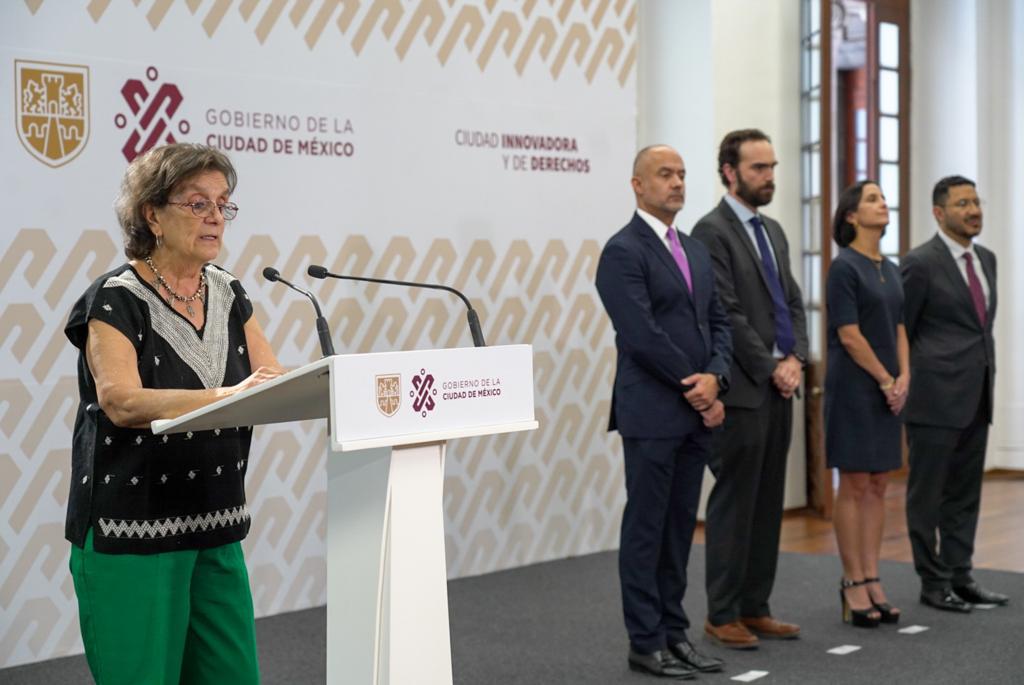Mexico City Government Reports Technical and Scientific Inconsistencies Found In Phase III Report Submitted by DNV on Metro Line 12
Mexico City, Mexico, May 11TH., 2022 BULLETIN 284/2022 MEXICO CITY GOVERNMENT REPORTS TECHNICAL AND SCIENTIFIC INCONSISTENCIES FOUND IN PHASE III REPORT SUBMITTED BY DNV ON METRO LINE 12
● The latest report states that the bolts used in the collapsed section of Metro Line 12 were so poorly designed and made that they would only have had a 14-year life span.
● The Government makes available to the public the DNV Report III as well as the Report on the technical and scientific inconsistencies and contradictions of the report prepared by DNV that was not accepted by SGIRPC, which can be consulted at the following link: https://transparencialinea12.cdmx.gob.mx/observaciones-de-la-sgirpc-presentadas-dnv
The Mexico City Government, through the City Department of Comprehensive Risk Management and Civil Protection (SGIRPC) and the City Department of Works and Services (SOBSE), informs about the contradictions and serious technical and scientific inconsistencies found between the DNV Phase III Root Cause Analysis Results Report and the two previous reports, which resulted in the rejection of the last report submitted. In a message to the media, Mexico City's Secretary of Works and Services, Jesús Esteva Medina, summarized DNV's inconsistencies and contradictions.
-
Although in the Phase III Report, the company acknowledges that "even in a scenario in which the bridge would have been built according to specifications (executive project), the most critical bolts would have failed after 1.25 million trains, or approximately 14 years of operation", there were serious design errors. However, in the same Phase III Report, it points out that there is a serious inconsistency in saying that a routine inspection defined in a deficient manual could correct a serious design error.
-
The DNV Phase II Report states that the deformations were imperceptible to the naked eye and not detectable. So says page V in paragraph 7: "the North and South Beams were loaded in such a way that they were moving towards each other before failure. These deformations were not detectable in a simple visual inspection". Despite this fact, in the Final Phase III Report, DNV mentions that these deformations were detectable in a street level inspection and uses only low quality images obtained from the Google Street View service as support. This despite the fact that Google's own Terms of Service state that "actual conditions may differ from the results of the maps and content, so users must apply their own judgment and use Google Maps/Google Earth at their own risk. Users are responsible at all times for their conduct and the consequences thereof". To do so, please refer to the following link: https://www.google.com/intl/es/help/terms_maps/).
-
In the Phase II Report, the company mentions deflections of 7.62 centimeters (cm) as risk criteria, despite the fact that the Construction Regulation establishes that the allowable deflection in the Regulation for a span of the magnitude where the collapse occurred is 11.7 cm, which is much higher than the 7.62 cm indicated.
-
In the Phase III Report, it mentions that routine inspections were not performed, but acknowledges that they were provided with the results of the 2019, 2020 inspections, and that in April 2021 an inspection was contracted for that year.
-
In the Phase III Report, it states that inspections should have been performed in accordance with the Maintenance Manual; however, in the Phase III Report, DNV acknowledges that the Maintenance Manual should be reviewed and corrected since it has significant deficiencies, particularly with regard to inspections. Therefore, it is concluded that the Phase III Report contains contradictions and technical flaws with respect to the Phase I and Phase II Report, which is why it has been rejected by the SGIRPC. Esteva confirmed that inspections were performed in 2019 and 2020; that a deflection could not have been detected from street level and that the collapse could not have been avoided with visual inspections. Nor could the collapse have been avoided with an inspection done with a Maintenance Manual that DNV itself qualifies as deficient. Esteva Medina emphasized that the main interest of the Mexico City Government is to deliver a safe and reliable Metro Line 12 service, in accordance with the Construction Regulations of the capital city and its complementary Technical Standards in force. Once again, he thanked the companies that are supporting the city and the victims, instead of entering into a long trial, since with this, they ratify the commitment to reinforce the structure and raise the level of structural safety based on the city's current Building Regulations, which are 30 percent more demanding in terms of seismic forces. The City Secretary of Comprehensive Risk Management and Civil Protection, Myriam Urzúa Venegas, informed that although DNV committed to deliver the Root Cause Analysis Results Report (RCA) - Phase III in October 2021, in the progress report presented, SGIRPC observed several deficiencies and inconsistencies in the analysis which were pointed out both to the Support Committee of the Capital Government and in turn these contradictions were raised to DNV, which resulted in the company not submitting the document on the originally established date. On February 15, 2022, the City Department of Comprehensive Risk Management and Civil Protection sent the company a letter in which it made a series of comments and observations on the preliminary draft of the Phase III Report, considering that the work still did not comply with the provisions of the contract and, therefore, did not clearly identify the root cause of the collapse. Despite this, the company delivered the document on February 28, 2022, which unfortunately failed to comply with the specifications requested in the contract.
Subsequently, in letters dated March 10, 2022, March 29, 2022 and April 20, 2022, the deficiencies found in the Phase III Report were pointed out, such as that they did not consider information on the so-called mirror or twin section, a section of Metro Line 12 that has a structural configuration identical to the collapsed section; that they did not present alternative hypotheses to be investigated and their corresponding evaluation nor the reasons for discarding such hypotheses. In addition, DNV was particularly requested to delve into the consequences of the design error indicated in both the Phase II Report and the Phase III document.
Furthermore, although the company was requested to adhere to the methodology originally presented by DNV, called "Barrier-based Systematic Cause Analysis Technique, BSCAT", which is a registered trademark and aims to identify preventive barriers that, had they worked, the collapse might not have occurred, it is not present in the document.
"In addition to the above, the document confuses the direct causes of the collapse, construction and design problems -already established by the company in the Final Phase II Report- with the preventive barriers that, according to its own definition, are controls, systems, practices and procedures that could have contributed to prevent the collapse. It is for these reasons that the company's document, so far, has not been considered as formally accepted by the City Department of Comprehensive Risk Management and Civil Protection, because despite responding to some of the observations we made, these are still considered deficient and insufficient", he added.
The Government makes available to the public the DNV Phase III Report as well as the Report on the technical and scientific inconsistencies and contradictions of the report prepared by DNV that was not accepted by SGIRPC, which can be consulted at the following link: https://transparencialinea12.cdmx.gob.mx/observaciones-de-la-sgirpc-presentadas-dnv.






